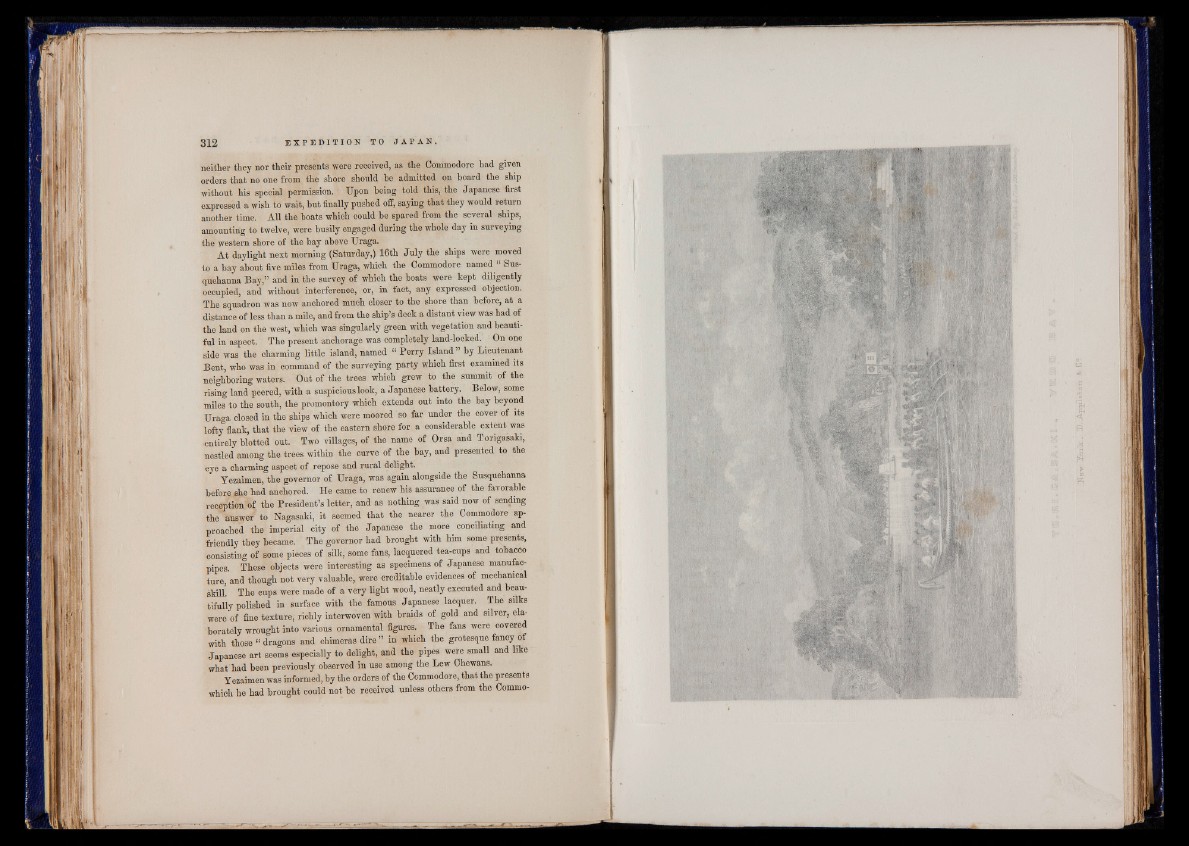
E X P E D I T I O N TO J A P A N .
neither they nor their presents were received, as the Commodore had given
orders that no one from the shore should he admitted on hoard the ship
without his special permission. Upon heing told this, the Japanese first
expressed a wish to wait, hut finally pushed off, saying that they would return
another time. All the hoats which could he spared from the several ships,
amounting to twelve, were husily engaged during the whole day in surveying
the western shore of the hay ahove Uraga.
At daylight next morning (Saturday,) 16th July the ships were moved
to a hay ahout five miles from Uraga, which the Commodore named “ Susquehanna
Bay,” and in the survey of which the hoats were kept diligently
occupied, and without interference, or, in fact, any expressed ohjection.
The squadron was now anchored much closer to the shore than before, at a
distance of less than a mile, and from the ship’s deck a distant view was had of
the land on the west, which was singularly green with vegetation and beautiful
in aspect. The present anchorage was completely land-locked. On one
side was the charming little island, named “ Perry Island” by Lieutenant
Bent, who was in command of the surveying party which first examined its
neighboring waters. Out of the trees which grew to the summit of the
rising land peered, with a suspicious look, a Japanese battery. Below, some
miles to the south, the promontory which extends out into the hay beyond
Uraga closed in the ships which were moored so far under the cover of its
lofty flank, that the view of the eastern shore for a considerable extent was
entirely blotted out. Two villages, of the name of Orsa and Torigasaki,
nestled among the trees within the curve of the hay, and presented to the
eye a charming aspect of repose and rural delight.
Tezaimen, the governor of Uraga, was again alongside the Susquehanna
before she had anchored. He came to renew his assurance of the favorable
reception of the President’s letter, and as nothing was said now of sending
the answer to Nagasaki, it seemed that the nearer the Commodore approached
the imperial city of the Japanese the more conciliating and
friendly they became. The governor had brought with him some presents,
consisting of some pieces of silk, some fans, lacquered tea-eups and tobacco
pipes. These objects were interesting as specimens of Japanese manufacture,
and though not very valuable, were creditable evidences of mechanical
skill. The cups were made of a very light wood, neatly executed and beautifully
polished in surface with the famous Japanese lacquer. The silks
were of fine texture, richly interwoven with braids of gold and silver, elaborately
wrought into various ornamental figures. The fans were covered
with those “ dragons and chimeras dire ” in which the grotesque fancy of
Japanese art seems especially to delight, and the pipes were small and like
what had been previously observed in use among the Lew Chewans.
Tezaimen was informed, by the orders of the Commodore, that the presents
which he had brought could not be received unless others from the Commo